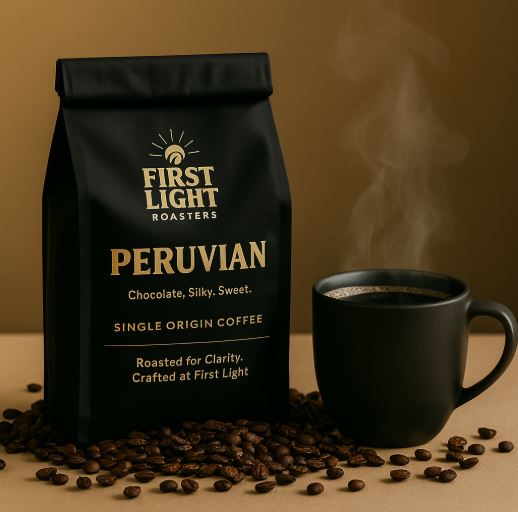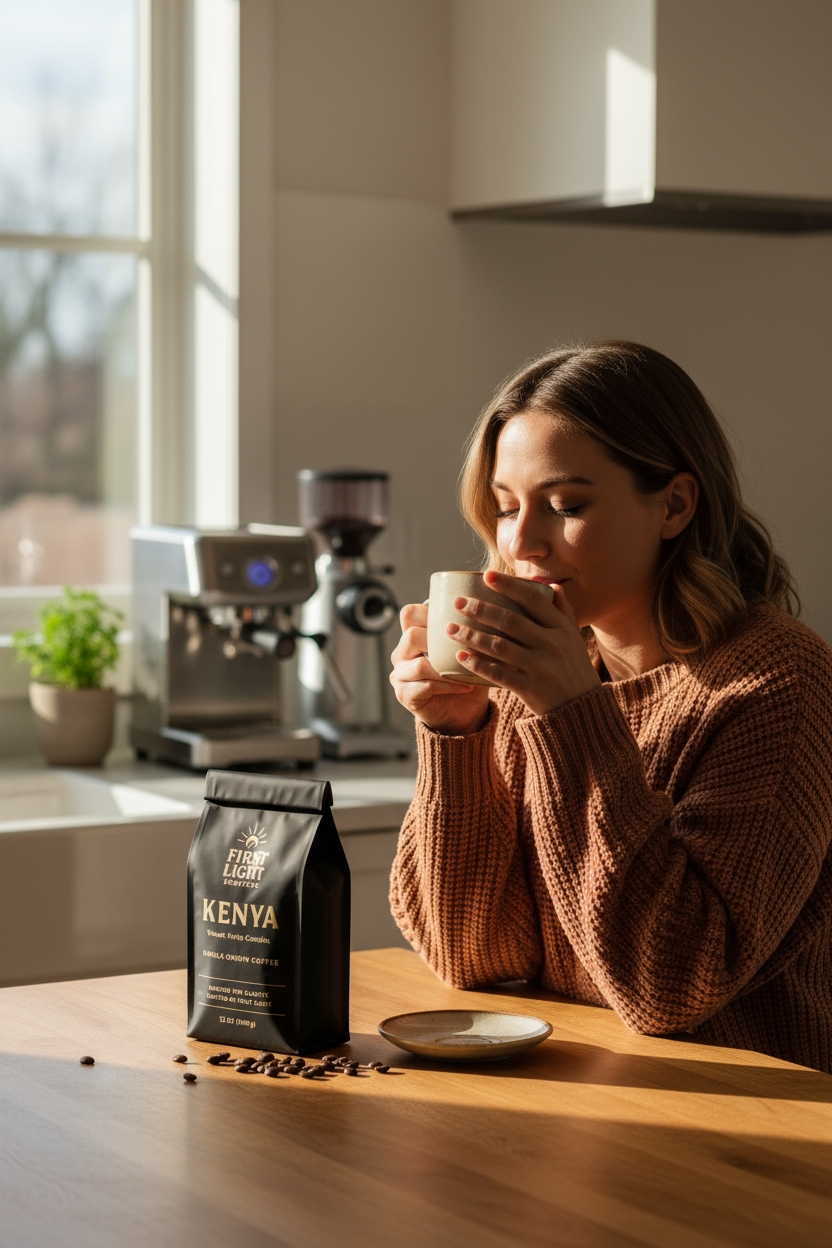
How Does Peruvian Coffee Compare to Colombian and Kenyan
When browsing coffee bags at a specialty shop or online roaster, you’ll often see origin labels: Colombia. Kenya. Peru. These are not just geographic names — they represent some of the world’s most prized coffee-producing regions, each with its own flavor characteristics, growing traditions and fanbase.
Peruvian coffee is sometimes the underdog in this trio, less talked about but gaining momentum fast among roasters and discerning drinkers. Colombian coffee has long held the reputation of a smooth, balanced staple. Kenyan coffee, on the other hand, is celebrated for its bold fruitiness and unique acidity. So where does Peruvian coffee fit in?
In this blog, we’ll compare Peruvian, Colombian and Kenyan coffee across several key categories: flavor, body, acidity, growing conditions, processing methods and brewing performance. By the end, you’ll have a clear understanding of how they differ and which might be right for your taste.
Flavor Profiles: What’s in the Cup
Peruvian Coffee:
-
Smooth and balanced
-
Notes of milk chocolate, almond, soft citrus
-
Gentle acidity
-
Medium body
-
Clean and mellow finish
Colombian Coffee:
-
Nutty and caramel-sweet
-
Hints of red fruit, toffee, and cocoa
-
Moderate brightness
-
Rich, round body
-
Crowd-pleasing and consistent
Kenyan Coffee:
-
Bold, bright and juicy
-
Berry notes like blackberry or currant
-
Sharp acidity (often citrus or tomato-like)
-
Lighter body but intense flavor
-
Complex, sometimes wine-like finish
Each origin delivers a distinct experience. Peruvian coffee is subtle and clean — it’s the quiet strength in the room. Colombian coffee is the comforting classic. Kenyan coffee is the vibrant standout.
Acidity and Brightness
Acidity is a major differentiator in coffee. It’s what gives coffee its sparkle, liveliness and depth. It’s not the same as bitterness good acidity is crisp, like the brightness of a green apple or lemon zest.
-
Kenya has the highest perceived acidity, often punchy and wine-like. This is part of why it stands out in blind cuppings.
-
Colombia offers medium acidity juicy and balanced, with red fruit sweetness.
-
Peru has the softest acidity, more citrusy than sharp, and mellow on the palate.
If you like a bright, zippy cup, Kenyan coffee may be your favorite. If you prefer a smoother, low-acid option, Peruvian is the way to go.
Body and Mouthfeel
Body refers to the weight or texture of the coffee on your tongue. Is it thin like tea or thick like syrup?
-
Colombian coffee often has the fullest body — rich and creamy.
-
Peruvian coffee offers a medium body that feels round but not heavy.
-
Kenyan coffee tends to be lighter in body but compensates with flavor intensity.
Those who enjoy a comforting, thicker mouthfeel might lean toward Colombia. If you want a lighter, smoother sip that still carries depth, Peru hits the mark.
Growing Conditions and Elevation
All three countries grow high-quality Arabica beans in mountainous regions with rich soil and ideal climate. However, there are some differences:
-
Peru: Grown in the Andes, often at 1,200 to 2,200 meters. Many farms are small and organic by tradition. Climate conditions allow slow bean development, increasing complexity.
-
Colombia: Wide range of elevations and climates, with two harvests per year. Farms often have modern infrastructure and government support via the National Federation of Coffee Growers.
-
Kenya: Grown at 1,500 to 2,100 meters on volcanic soil. Farmers often belong to cooperatives that supply centralized wet mills for processing.
These conditions impact flavor: slower growth at high altitudes enhances sugar development and acidity.
Processing Methods
How the coffee is processed (i.e., how the cherry is removed from the bean) greatly affects flavor.
-
Peru: Mostly washed (wet) process, which contributes to clarity and cleanliness.
-
Colombia: Primarily washed process, often with careful fermentation that brings out sweetness.
-
Kenya: Double-washed (a unique version of the washed method) that gives Kenyan coffee its intense acidity and crispness.
All three produce clean, specialty-grade coffee, but Kenya’s double-washing is a standout technique that elevates its profile even more.
Availability and Consistency
-
Colombia is the third-largest coffee producer globally. Its infrastructure ensures consistency and volume, making it widely available and reliably tasty.
-
Kenya has smaller output but high-quality lots. It’s more seasonal and selective, often auctioned in small microlots.
-
Peru is growing in popularity. Many smallholder farms are entering specialty markets with support from cooperatives, but you may find more variability unless buying from trusted sources.
At First Light Roasters, we work directly with Peruvian cooperatives that maintain consistent quality, allowing us to offer a smooth, reliable cup every time.
Brew Methods and Performance
Here’s how each origin performs across popular brewing methods:
-
Espresso: Colombian works best due to body and sweetness. Peruvian is great for softer, chocolate-heavy shots. Kenyan can be bright and challenging in espresso unless well-balanced.
-
Pour Over: Kenya shines here all the complexity and acidity shows up beautifully. Peruvian and Colombian are smooth and comforting.
-
French Press: Colombia and Peru perform well thanks to their body. Kenya may lose some clarity.
-
Cold Brew: Peru wins this round low acidity, chocolate and nutty tones make it ideal for smooth cold drinks.
-
AeroPress: All three can work, but Peru’s clarity and chocolate base make it a top choice for AeroPress experiments.
Price and Accessibility
-
Colombian coffee tends to be affordable and accessible at nearly every quality level.
-
Kenyan coffee is often more expensive due to auction systems, rarity, and demand.
-
Peruvian coffee is priced moderately, offering great value for its quality especially in the organic and fair trade segments.
You get a lot for your money with Peruvian beans: ethical sourcing, low acidity, and flavor clarity without breaking the bank.
Sustainability and Ethical Sourcing
-
Peru leads in organic certifications and small-farmer cooperatives. Many beans are organically grown even if not certified.
-
Colombia has major programs for sustainability through its coffee federation.
-
Kenya is improving, but challenges in infrastructure and traceability remain.
If buying coffee that supports fair wages and sustainable farming matters to you, Peruvian coffee is a strong choice.
Final Thoughts
Each of these origins brings something special to the table:
-
Choose Peruvian coffee for smooth balance, low acidity, and clean chocolate-nut notes. A reliable daily drinker that performs well across brewing methods.
-
Choose Colombian coffee for rich body, sweet caramel tones and universal appeal.
-
Choose Kenyan coffee for bold fruit, high acidity and vibrant complexity. Best for adventurous coffee lovers.
At First Light Roasters, we celebrate the uniqueness of Peruvian coffee. Our carefully sourced single origin beans offer exceptional clarity, organic purity and a balanced flavor that stands strong next to more famous origins.
Whether you're trying your first specialty coffee or looking for a new favorite, give Peruvian coffee a place in your cup. It just might surprise you.




Leave a comment
This site is protected by hCaptcha and the hCaptcha Privacy Policy and Terms of Service apply.